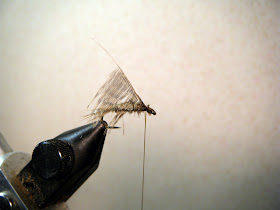I met with Jason Lozano, the Airflo rep, a while back and he said that the new Rage Compact is really taking off. I was a little confused as the new Rage Compact is considered a Skagit head so what's the difference between the Rage and the standard Skagit Compact? I did some research at Deneki.com and came up with some information to share. Let me try to explain it.
The designers at Airflo had already come up with four basic head designs. Three which have been around awhile and the Skagit Switch which is relatively new.
- The good old Skagit Compact was designed for for sink-tip fishing, like T-8, T-11, and T-14 sink tips.
- The Scandi Compact was designed for for finesse dry line work, and light tips, primarily the ones that are part floating and part sink tip.
- The Tactical Steelhead for those that appreciate a longer casting stroke and want the versitility of a multi-tip line.
- And the new Skagit Switch, which is designed as a sink-tip line for switch rods and shorter Spey rods. I'll explain this new line in another post.
The Rage Compact Was Conceived.
Airflo came up with the idea of the Rage Compact. Their thoughts on the Rage were that they needed an additional and different design for floating line presentations. The Scandi heads, which covers finesse dry line work, are great for line speed and tight loops. However, Scandi heads have their faults.First, they suck in the wind. The long, delicate front taper which gives Scandi's their finesse-like feel, crumbles in even a modest breeze. The other problem with Scandi heads is they struggle to turn-over skating flies and large wet flies. There just isn't enough mass in the front of the line to give the caster sufficient turn-over. Another shortcoming is that most anglers struggle when they switch from their Skagit to their Scandi. I know I do. The Skagit versus the Scandi lines cast so dramatically different.
Tom Larimer with the blessings of Tim Rajeff, the US distributer of Airflo and over-all casting guru designed the new Rage Compact. Tom Larimer with the help of the Rajeff design team came up with a Spey line built for surface and near-surface presentations that cast like a Skagit but still had the finesse of a Scandi. The new Airflo Rage Compact is the perfect floating line to compliment your good old Skagit Compact. This is purported to be the best floating spey line Airflo has ever come up with.
Lining Your Rod With a Rage Compact
To determine the correct weight to choose and as a general rule of thumb, line your rod 30 grains lighter than your Skagit Compact. If you like a faster-livelier feel to your floating head, go 60 grains lighter. Like all of Airflo's Spey heads, the lines comes in 30 grain increments and are available in 360 grains to 600 grains.
Rigging Your Rod with a Rage Compact
As far as rigging, they recommend using a 10' Airflo Poly Leader with 2' to 4' of tippet. It is also recommended to fish an intermediate leader with skating flies.If you fish shallower rivers in the West, the Rage will easily handle a sinking Poly Leader and an un-weighted fly. It's a great line on rivers where a full blown sink-tip is overkill. It isn't recommended for casting big weighted flies, but it' will cast un-weighted flies or tube flies a mile.
Try the Rage for Switch Rods!
The Rage also casts great on a switch stick.Line it exactly the same as your Skagit Switch. Just for reference, most #7 weight switch rods are taking a 450 grain head. On a #6 weight, a 390 grain head.
Airflo's New Loop Labels
A new feature on all Airflo Spey lines that the labeling of line type/size is on the front loop, plus the old color coded system. Now you have an easy way of identifying your Spey lines!
In Summary a Quote from Airflo's Tim Larimer
I think Tom Larimer sums it up by saying,
"If you love the feel of casting Skagit heads and want a floating line that cuts through the wind, turns over with total ease and doesn't take a PHD. in casting to make it huck, give the new "Rage" a try. I guarantee it will elevate your floating line casting and fishing".



















